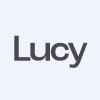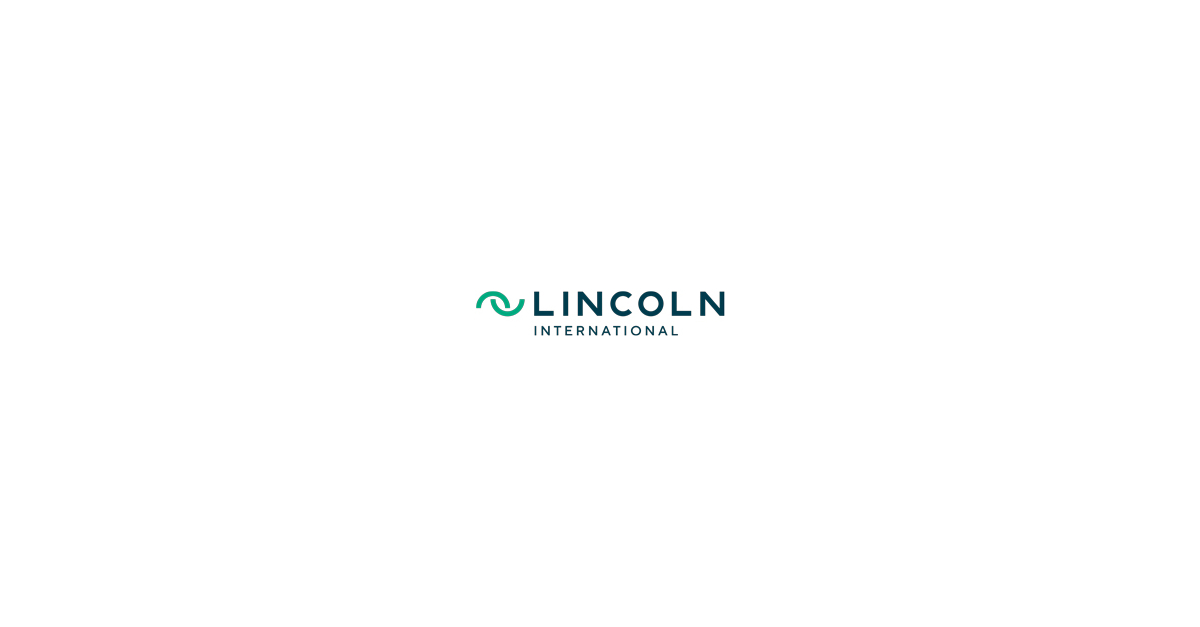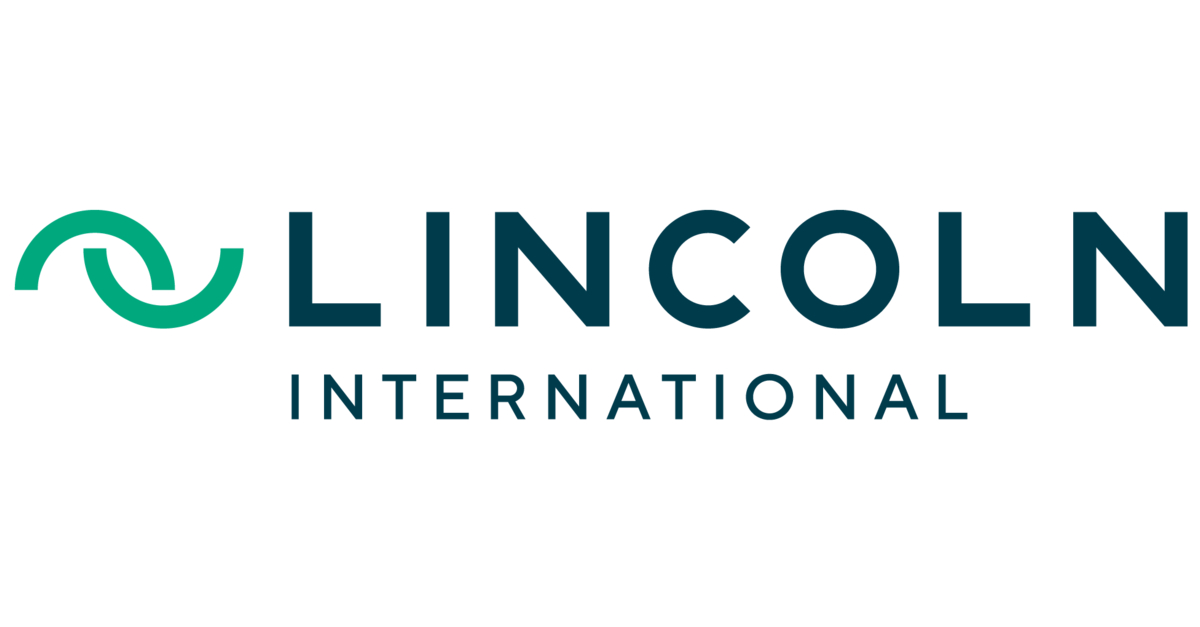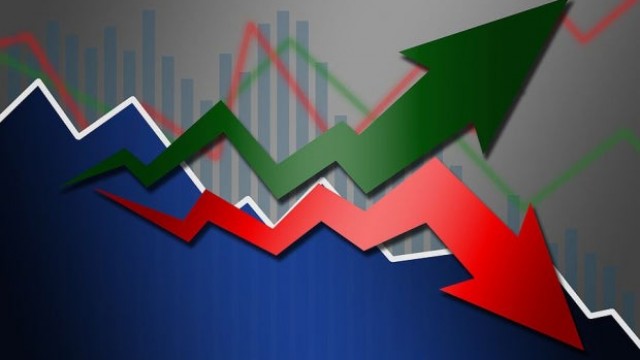Lucy Scientific Discovery Key Executives
This section highlights Lucy Scientific Discovery's key executives, including their titles and compensation details.
Find Contacts at Lucy Scientific Discovery
(Showing 0 of )
Lucy Scientific Discovery Earnings
This section highlights Lucy Scientific Discovery's earnings, including key dates, EPS, earnings reports, and earnings call transcripts.
Next Earnings Date
Last Earnings Results
Earnings Call Transcripts
| Transcript | Quarter | Year | Date | Estimated EPS | Actual EPS |
|---|

Lucy Scientific Discovery Inc. researches, develops, manufactures, and commercializes psychedelic products. It offers biological raw materials, crude extracts, psychotropic compounds, and active pharmaceutical ingredients (APIs). Lucy Scientific Discovery Inc. was formerly known as Hollyweed North Cannabis, Inc. The company was incorporated in 2017 and is based in Victoria, Canada.
$0.51
Stock Price
$906.91K
Market Cap
2
Employees
Victoria, BC
Location
Financial Statements
Access annual & quarterly financial statements for Lucy Scientific Discovery, including income statements, balance sheets, and cash flow statements..
Annual Income Statement
| Breakdown | June 30, 2023 | June 30, 2022 | June 30, 2021 | June 30, 2020 |
|---|---|---|---|---|
| Revenue | $7.05K | $- | $- | $- |
| Cost of Revenue | $4.50K | $- | $- | $- |
| Gross Profit | $2.55K | $- | $- | $- |
| Gross Profit Ratio | 36.20% | 0.00% | 0.00% | 0.00% |
| Research and Development Expenses | $- | $- | $165.82K | $61.20K |
| General and Administrative Expenses | $- | $- | $- | $- |
| Selling and Marketing Expenses | $- | $- | $- | $- |
| Selling General and Administrative Expenses | $5.77M | $3.47M | $2.68M | $2.80M |
| Other Expenses | $53 | $136 | $-165.82K | $- |
| Operating Expenses | $5.77M | $3.47M | $2.51M | $2.86M |
| Cost and Expenses | $5.77M | $3.47M | $2.51M | $2.86M |
| Interest Income | $1.97M | $2.06M | $2.36M | $283.28K |
| Interest Expense | $1.97M | $2.06M | $2.36M | $171.75K |
| Depreciation and Amortization | $101.47K | $322.23K | $236.56K | $206.30K |
| EBITDA | $-5.66M | $-3.47M | $-2.49M | $-2.86M |
| EBITDA Ratio | -80360.58% | 0.00% | 0.00% | 0.00% |
| Operating Income | $-5.84M | $-3.79M | $-2.49M | $-2.86M |
| Operating Income Ratio | -82919.74% | 0.00% | 0.00% | 0.00% |
| Total Other Income Expenses Net | $-3.22M | $-2.39M | $-2.21M | $-699.53K |
| Income Before Tax | $-8.99M | $-5.86M | $-4.73M | $-3.56M |
| Income Before Tax Ratio | -127532.01% | 0.00% | 0.00% | 0.00% |
| Income Tax Expense | $1.97M | $322.23K | $2.38M | $-559.73K |
| Net Income | $-8.99M | $-6.18M | $-7.10M | $-3.00M |
| Net Income Ratio | -127532.01% | 0.00% | 0.00% | 0.00% |
| EPS | $-0.71 | $-0.38 | $-0.44 | $-0.19 |
| EPS Diluted | $-0.71 | $-0.38 | $-0.44 | $-0.19 |
| Weighted Average Shares Outstanding | 12.70M | 16.06M | 16.06M | 16.06M |
| Weighted Average Shares Outstanding Diluted | 12.70M | 16.06M | 16.06M | 16.06M |
| SEC Filing | Source | Source | Source | Source |
| Breakdown | December 31, 2023 | September 30, 2023 | June 30, 2023 | March 31, 2023 | December 31, 2022 | September 30, 2022 | June 30, 2022 | March 31, 2022 | December 31, 2021 | September 30, 2021 |
|---|---|---|---|---|---|---|---|---|---|---|
| Revenue | $9.68K | $- | $7.05K | $- | $- | $- | $- | $- | $- | $- |
| Cost of Revenue | $23.07K | $47.19K | $32.32K | $26.89K | $27.68K | $19.07K | $- | $- | $- | $- |
| Gross Profit | $-13.39K | $-47.19K | $-25.27K | $-26.89K | $-27.68K | $-19.07K | $- | $- | $- | $- |
| Gross Profit Ratio | -138.30% | 0.00% | -358.60% | 0.00% | 0.00% | 0.00% | 0.00% | 0.00% | 0.00% | 0.00% |
| Research and Development Expenses | $- | $- | $- | $- | $- | $- | $- | $- | $- | $- |
| General and Administrative Expenses | $- | $- | $- | $- | $- | $- | $- | $- | $- | $- |
| Selling and Marketing Expenses | $- | $- | $- | $- | $- | $- | $- | $- | $- | $- |
| Selling General and Administrative Expenses | $849.12K | $1.51M | $2.10M | $2.39M | $448.53K | $828.56K | $888.53K | $1.10M | $763.52K | $714.48K |
| Other Expenses | $-312.76K | $11 | $5 | $4 | $5 | $39 | $- | $- | $- | $- |
| Operating Expenses | $849.12K | $1.51M | $2.10M | $2.39M | $448.53K | $828.56K | $888.53K | $1.10M | $763.52K | $714.48K |
| Cost and Expenses | $872.19K | $1.51M | $2.11M | $2.39M | $448.53K | $828.56K | $888.53K | $1.10M | $763.52K | $714.48K |
| Interest Income | $- | $- | $402.02K | $535.63K | $485.28K | $543.22K | $- | $- | $- | $- |
| Interest Expense | $128.47K | $390.60K | $402.02K | $535.63K | $485.28K | $543.22K | $424.80K | $567.14K | $598.34K | $474.27K |
| Depreciation and Amortization | $19.21K | $47.20K | $27.82K | $26.89K | $27.68K | $19.07K | $54.88K | $27.08K | $170.92K | $-265.95K |
| EBITDA | $-843.30K | $-1.46M | $-2.07M | $-2.36M | $-420.85K | $-809.45K | $-888.40K | $-1.10M | $-763.52K | $-714.48K |
| EBITDA Ratio | -8708.18% | 0.00% | -29404.31% | 0.00% | 0.00% | 0.00% | 0.00% | 0.00% | 0.00% | 0.00% |
| Operating Income | $-862.51K | $-1.61M | $-2.10M | $-2.39M | $-448.53K | $-828.52K | $-888.40K | $-1.10M | $-934.45K | $-448.53K |
| Operating Income Ratio | -8906.55% | 0.00% | -29799.06% | 0.00% | 0.00% | 0.00% | 0.00% | 0.00% | 0.00% | 0.00% |
| Total Other Income Expenses Net | $-441.23K | $-390.59K | $-476.86K | $-1.72M | $-485.28K | $-543.18K | $-424.66K | $-567.14K | $-598.34K | $-625.57K |
| Income Before Tax | $-1.30M | $-2.00M | $-2.58M | $-4.11M | $-933.81K | $-1.37M | $-1.31M | $-1.67M | $-1.53M | $-1.34M |
| Income Before Tax Ratio | -13462.85% | 0.00% | -36564.98% | 0.00% | 0.00% | 0.00% | 0.00% | 0.00% | 0.00% | 0.00% |
| Income Tax Expense | $1.51M | $390.62K | $402.02K | $1.18M | $485.28K | $543.22K | $-888.53K | $- | $170.92K | $740.23K |
| Net Income | $-2.81M | $-2.00M | $-2.58M | $-5.29M | $-1.42M | $-1.91M | $-1.31M | $-1.67M | $-1.53M | $-1.34M |
| Net Income Ratio | -29027.95% | 0.00% | -36564.98% | 0.00% | 0.00% | 0.00% | 0.00% | 0.00% | 0.00% | 0.00% |
| EPS | $-0.16 | $-0.11 | $-0.15 | $-0.39 | $-0.14 | $-0.12 | $-0.08 | $-0.10 | $-0.09 | $-0.08 |
| EPS Diluted | $-0.16 | $-0.11 | $-0.15 | $-0.39 | $-0.14 | $-0.12 | $-0.08 | $-0.10 | $-0.09 | $-0.08 |
| Weighted Average Shares Outstanding | 17.65M | 17.58M | 17.21M | 13.63M | 10.44M | 16.06M | 16.28M | 16.28M | 16.06M | 16.06M |
| Weighted Average Shares Outstanding Diluted | 17.65M | 17.58M | 17.21M | 13.63M | 10.44M | 16.28M | 16.28M | 16.28M | 16.28M | 16.28M |
| SEC Filing | Source | Source | Source | Source | Source | Source | Source | Source | Source | Source |
Annual Balance Sheet
| Breakdown | June 30, 2023 | June 30, 2022 | June 30, 2021 | June 30, 2020 |
|---|---|---|---|---|
| Cash and Cash Equivalents | $1.67M | $53.38K | $246.03K | $50.02K |
| Short Term Investments | $- | $34.11K | $- | $- |
| Cash and Short Term Investments | $1.67M | $53.38K | $246.03K | $50.02K |
| Net Receivables | $406.40K | $13.23K | $12.53K | $14.29K |
| Inventory | $-399.36K | $1.80M | $1.68M | $- |
| Other Current Assets | $2.14M | $34.11K | $71.52K | $36.77K |
| Total Current Assets | $3.82M | $1.90M | $2.01M | $101.08K |
| Property Plant Equipment Net | $1.79M | $843.50K | $843.50K | $- |
| Goodwill | $- | $- | $- | $- |
| Intangible Assets | $1.48M | $- | $- | $- |
| Goodwill and Intangible Assets | $1.48M | $- | $- | $- |
| Long Term Investments | $- | $- | $- | $- |
| Tax Assets | $- | $- | $- | $- |
| Other Non-Current Assets | $1.68M | $1.89M | $2.71M | $18.34K |
| Total Non-Current Assets | $4.96M | $2.73M | $3.55M | $18.34K |
| Other Assets | $- | $- | $- | $- |
| Total Assets | $8.78M | $4.63M | $5.55M | $119.43K |
| Account Payables | $1.29M | $2.42M | $2.03M | $1.45M |
| Short Term Debt | $399.24K | $1.22M | $1.25M | $540.69K |
| Tax Payables | $- | $- | $- | $- |
| Deferred Revenue | $-1.29M | $- | $- | $-1.45M |
| Other Current Liabilities | $2.31M | $2.17M | $1.50M | $3.19M |
| Total Current Liabilities | $2.71M | $5.81M | $4.77M | $3.73M |
| Long Term Debt | $1.39M | $3.60M | $944.48K | $26.79K |
| Deferred Revenue Non-Current | $- | $- | $- | $- |
| Deferred Tax Liabilities Non-Current | $- | $- | $- | $- |
| Other Non-Current Liabilities | $- | $- | $6.19M | $-26.79K |
| Total Non-Current Liabilities | $1.39M | $3.60M | $7.14M | $728.87K |
| Other Liabilities | $- | $- | $- | $1 |
| Total Liabilities | $4.10M | $9.41M | $11.91M | $4.46M |
| Preferred Stock | $- | $- | $- | $- |
| Common Stock | $48.93M | $30.79M | $23.57M | $20.29M |
| Retained Earnings | $-44.42M | $-35.43M | $-29.57M | $-24.85M |
| Accumulated Other Comprehensive Income Loss | $160.41K | $-141.02K | $-353.30K | $217.28K |
| Other Total Stockholders Equity | $- | $- | $- | $- |
| Total Stockholders Equity | $4.68M | $-4.78M | $-6.36M | $-4.34M |
| Total Equity | $4.68M | $-4.78M | $-6.36M | $-4.34M |
| Total Liabilities and Stockholders Equity | $8.78M | $4.63M | $5.55M | $119.43K |
| Minority Interest | $- | $- | $- | $- |
| Total Liabilities and Total Equity | $8.78M | $4.63M | $5.55M | $119.43K |
| Total Investments | $- | $34.11K | $- | $- |
| Total Debt | $1.79M | $4.82M | $2.19M | $1.27M |
| Net Debt | $114.93K | $4.77M | $1.95M | $1.22M |
Balance Sheet Charts
| Breakdown | December 31, 2023 | September 30, 2023 | June 30, 2023 | March 31, 2023 | December 31, 2022 | September 30, 2022 | June 30, 2022 |
|---|---|---|---|---|---|---|---|
| Cash and Cash Equivalents | $211.12K | $237.61K | $1.67M | $3.43M | $26.06K | $16.40K | $53.38K |
| Short Term Investments | $- | $- | $- | $- | $- | $- | $- |
| Cash and Short Term Investments | $211.12K | $237.61K | $1.67M | $3.43M | $26.06K | $16.40K | $53.38K |
| Net Receivables | $8.98K | $10.06K | $406.40K | $40.08K | $37.01K | $11.54K | $13.23K |
| Inventory | $- | $-10.06K | $-399.36K | $-40.08K | $- | $1.52M | $1.80M |
| Other Current Assets | $1.12M | $1.35M | $2.14M | $2.38M | $1.40M | $154.39K | $34.11K |
| Total Current Assets | $1.34M | $1.59M | $3.82M | $5.80M | $1.47M | $1.70M | $1.90M |
| Property Plant Equipment Net | $- | $1.64M | $1.79M | $1.87M | $1.90M | $1.92M | $843.50K |
| Goodwill | $- | $- | $- | $- | $- | $- | $- |
| Intangible Assets | $1.45M | $1.46M | $1.48M | $- | $- | $- | $- |
| Goodwill and Intangible Assets | $1.45M | $1.46M | $1.48M | $- | $- | $- | $- |
| Long Term Investments | $- | $- | $- | $- | $- | $- | $- |
| Tax Assets | $- | $- | $- | $- | $- | $- | $- |
| Other Non-Current Assets | $1.50M | $1.57M | $1.68M | $1.72M | $1.41M | $1.40M | $1.89M |
| Total Non-Current Assets | $2.95M | $4.68M | $4.96M | $3.60M | $3.31M | $3.32M | $2.73M |
| Other Assets | $- | $- | $- | $- | $- | $- | $- |
| Total Assets | $4.29M | $6.27M | $8.78M | $9.40M | $4.78M | $5.02M | $4.63M |
| Account Payables | $1.35M | $1.20M | $1.29M | $791.44K | $3.01M | $2.40M | $2.42M |
| Short Term Debt | $643.51K | $399.15K | $399.24K | $385.70K | $3.54M | $2.17M | $1.22M |
| Tax Payables | $- | $- | $- | $- | $- | $- | $- |
| Deferred Revenue | $- | $-1.20M | $- | $- | $- | $- | $- |
| Other Current Liabilities | $1.49M | $1.83M | $1.02M | $892.86K | $2.21M | $2.24M | $2.17M |
| Total Current Liabilities | $3.49M | $2.23M | $2.71M | $2.07M | $8.77M | $6.82M | $5.81M |
| Long Term Debt | $719.37K | $1.34M | $1.39M | $1.37M | $2.79M | $3.95M | $3.60M |
| Deferred Revenue Non-Current | $- | $- | $- | $- | $- | $- | $- |
| Deferred Tax Liabilities Non-Current | $- | $- | $- | $- | $- | $- | $- |
| Other Non-Current Liabilities | $- | $- | $- | $- | $- | $- | $- |
| Total Non-Current Liabilities | $719.37K | $1.34M | $1.39M | $1.37M | $2.79M | $3.95M | $3.60M |
| Other Liabilities | $- | $- | $- | $- | $- | $- | $- |
| Total Liabilities | $4.21M | $3.56M | $4.10M | $3.44M | $11.56M | $10.76M | $9.41M |
| Preferred Stock | $- | $- | $- | $- | $- | $- | $141.02K |
| Common Stock | $49.03M | $49.03M | $48.93M | $47.73M | $30.79M | $30.79M | $30.79M |
| Retained Earnings | $-49.03M | $-46.41M | $-44.42M | $-41.84M | $-37.73M | $-36.80M | $-35.43M |
| Accumulated Other Comprehensive Income Loss | $81.83K | $83.01K | $160.41K | $65.01K | $158.65K | $259.76K | $-141.02K |
| Other Total Stockholders Equity | $- | $- | $- | $- | $- | $- | $-141.02K |
| Total Stockholders Equity | $81.16K | $2.70M | $4.68M | $5.96M | $-6.78M | $-5.75M | $-4.78M |
| Total Equity | $81.16K | $2.70M | $4.68M | $5.96M | $-6.78M | $-5.75M | $-4.78M |
| Total Liabilities and Stockholders Equity | $4.29M | $6.27M | $8.78M | $9.40M | $4.78M | $5.02M | $4.63M |
| Minority Interest | $- | $- | $- | $- | $- | $- | $- |
| Total Liabilities and Total Equity | $4.29M | $6.27M | $8.78M | $9.40M | $4.78M | $5.02M | $4.63M |
| Total Investments | $- | $- | $- | $- | $- | $- | $- |
| Total Debt | $1.36M | $1.74M | $1.79M | $1.76M | $6.34M | $6.12M | $4.82M |
| Net Debt | $1.15M | $1.50M | $114.93K | $-1.67M | $6.31M | $6.11M | $4.77M |
Annual Cash Flow
| Breakdown | June 30, 2023 | June 30, 2022 | June 30, 2021 | June 30, 2020 |
|---|---|---|---|---|
| Net Income | $-8.99M | $-5.86M | $-4.73M | $-3.00M |
| Depreciation and Amortization | $101.47K | $- | $- | $- |
| Deferred Income Tax | $-694.06K | $- | $- | $- |
| Stock Based Compensation | $694.06K | $210.57K | $974.35K | $1.45M |
| Change in Working Capital | $142.72K | $841.10K | $-236.65K | $483.52K |
| Accounts Receivables | $-7.05K | $97 | $-470 | $-18.78K |
| Inventory | $- | $-97 | $470 | $- |
| Accounts Payables | $407.25K | $487.59K | $-277.59K | $67.99K |
| Other Working Capital | $-257.47K | $353.50K | $40.94K | $434.31K |
| Other Non Cash Items | $4.48M | $2.39M | $2.50M | $1.97M |
| Net Cash Provided by Operating Activities | $-4.27M | $-2.42M | $-1.48M | $-499.16K |
| Investments in Property Plant and Equipment | $-300.00K | $-34.11K | $- | $- |
| Acquisitions Net | $- | $- | $- | $- |
| Purchases of Investments | $- | $-34.11K | $- | $- |
| Sales Maturities of Investments | $34.11K | $- | $- | $- |
| Other Investing Activities | $-265.89K | $34.11K | $- | $- |
| Net Cash Used for Investing Activities | $-265.89K | $-34.11K | $- | $12.03K |
| Debt Repayment | $- | $- | $- | $- |
| Common Stock Issued | $7.50M | $88.21K | $766.23K | $453.14K |
| Common Stock Repurchased | $- | $- | $- | $-80 |
| Dividends Paid | $- | $- | $- | $- |
| Other Financing Activities | $6.19M | $2.25M | $1.70M | $535.24K |
| Net Cash Used Provided by Financing Activities | $6.19M | $2.25M | $1.70M | $535.24K |
| Effect of Forex Changes on Cash | $-39.55K | $9.64K | $-18.56K | $1.90K |
| Net Change in Cash | $1.62M | $-192.65K | $196.01K | $50.02K |
| Cash at End of Period | $1.67M | $53.38K | $246.03K | $50.02K |
| Cash at Beginning of Period | $53.38K | $246.03K | $50.02K | $- |
| Operating Cash Flow | $-4.27M | $-2.42M | $-1.48M | $-499.16K |
| Capital Expenditure | $-300.00K | $-34.11K | $- | $- |
| Free Cash Flow | $-4.57M | $-2.45M | $-1.48M | $-499.16K |
Cash Flow Charts
| Breakdown | December 31, 2023 | September 30, 2023 | June 30, 2023 | March 31, 2023 | December 31, 2022 | September 30, 2022 | June 30, 2022 | March 31, 2022 | December 31, 2021 | September 30, 2021 |
|---|---|---|---|---|---|---|---|---|---|---|
| Net Income | $-1.30M | $-2.00M | $-2.58M | $-4.11M | $-933.81K | $-1.37M | $-1.31M | $-1.67M | $-1.53M | $-1.34M |
| Depreciation and Amortization | $19.21K | $47.20K | $27.82K | $26.89K | $27.68K | $19.07K | $- | $- | $- | $- |
| Deferred Income Tax | $- | $-275.45K | $-563.33K | $-78.89K | $-8.15K | $-43.69K | $- | $- | $- | $- |
| Stock Based Compensation | $- | $275.45K | $563.33K | $- | $8.15K | $43.69K | $68.35K | $121.30K | $6.28K | $14.64K |
| Change in Working Capital | $395.50K | $159.68K | $-59.47K | $-402.31K | $337.60K | $266.90K | $429.72K | $337.20K | $-18.05K | $92.22K |
| Accounts Receivables | $1.78K | $7.05K | $-360.61K | $-3.02K | $-26.05K | $1.69K | $- | $- | $- | $- |
| Inventory | $0 | $- | $360.61K | $3.02K | $26.05K | $-1.69K | $- | $- | $- | $- |
| Accounts Payables | $113.70K | $96.34K | $228.16K | $-241.18K | $235.54K | $184.72K | $298.19K | $3.93K | $183.41K | $2.06K |
| Other Working Capital | $280.02K | $56.29K | $-287.63K | $-161.13K | $102.05K | $82.18K | $131.54K | $333.27K | $-201.46K | $90.16K |
| Other Non Cash Items | $570.70K | $227.27K | $748.17K | $2.45M | $444.09K | $839.24K | $416.64K | $820.48K | $583.06K | $565.85K |
| Net Cash Provided by Operating Activities | $-318.33K | $-1.29M | $-1.86M | $-2.03M | $-124.44K | $-246.53K | $-398.49K | $-391.10K | $-961.50K | $-667.34K |
| Investments in Property Plant and Equipment | $944 | $-123.00K | $-299.22K | $- | $- | $- | $-741 | $- | $- | $- |
| Acquisitions Net | $- | $- | $- | $- | $- | $- | $- | $- | $- | $- |
| Purchases of Investments | $- | $- | $- | $- | $- | $- | $- | $- | $- | $- |
| Sales Maturities of Investments | $- | $- | $-34.11K | $154 | $-656 | $34.11K | $- | $- | $- | $- |
| Other Investing Activities | $- | $-123.00K | $599.22K | $-300.15K | $- | $34.11K | $-741 | $- | $- | $- |
| Net Cash Used for Investing Activities | $944 | $-123.00K | $265.89K | $-300.00K | $-656 | $34.11K | $-741 | $- | $-33.37K | $- |
| Debt Repayment | $- | $- | $- | $- | $- | $- | $- | $- | $- | $- |
| Common Stock Issued | $- | $- | $74.72K | $6.00M | $-28.57K | $- | $- | $- | $- | $- |
| Common Stock Repurchased | $- | $- | $- | $- | $- | $- | $- | $- | $- | $- |
| Dividends Paid | $- | $- | $- | $- | $- | $- | $- | $- | $- | $- |
| Other Financing Activities | $751.19K | $- | $1.15K | $5.88M | $136.22K | $174.65K | $88.94K | $381.05K | $1.22M | $564.38K |
| Net Cash Used Provided by Financing Activities | $751.19K | $- | $1.15K | $5.88M | $136.22K | $174.65K | $88.94K | $381.05K | $1.22M | $564.38K |
| Effect of Forex Changes on Cash | $-43.99K | $-24.81K | $107.77K | $-145.98K | $-2.12K | $794 | $100 | $-398 | $40.63K | $-30.69K |
| Net Change in Cash | $-26.49K | $-1.44M | $-1.75M | $3.40M | $9.66K | $-36.98K | $-310.18K | $-10.44K | $261.63K | $-133.66K |
| Cash at End of Period | $211.12K | $237.61K | $1.67M | $3.43M | $26.06K | $16.40K | $53.38K | $363.56K | $374.01K | $112.37K |
| Cash at Beginning of Period | $237.61K | $1.67M | $3.43M | $26.06K | $16.40K | $53.38K | $363.56K | $374.01K | $112.37K | $246.03K |
| Operating Cash Flow | $-318.33K | $-1.29M | $-1.86M | $-2.03M | $-124.44K | $-246.53K | $-398.49K | $-391.10K | $-961.50K | $-667.34K |
| Capital Expenditure | $944 | $-123.00K | $-299.22K | $- | $- | $- | $-741 | $- | $- | $- |
| Free Cash Flow | $-317.39K | $-1.41M | $-2.16M | $-2.03M | $-124.44K | $-246.53K | $-399.23K | $-391.10K | $-961.50K | $-667.34K |
Lucy Scientific Discovery Dividends
Explore Lucy Scientific Discovery's dividend history, including dividend yield, payout ratio, and historical payments.
Lucy Scientific Discovery News
Read the latest news about Lucy Scientific Discovery, including recent articles, headlines, and updates.
Lucy Scientific Discovery Inc. Receives Nasdaq Notification of Non-Compliance with Listing Rule 5250(c)(1)
VANCOUVER, British Columbia--(BUSINESS WIRE)--Lucy Scientific Discovery Inc. (NASDAQ: LSDI), a Company dedicated to advancing the understanding and applications of psychotropic medicines, improving mental health outcomes, and enhancing well-being for individuals worldwide, announces that it has a hearing scheduled for June 25, 2024 before a Nasdaq Hearings Panel (the “Panel”) regarding its plan to regain compliance with Nasdaq Listing Rule 5550(b) (the “Stockholders' Equity Rule”). On May 21, 2.

Why Is Lucy Scientific Discovery (LSDI) Stock Up 227% Today?
Lucy Scientific Discovery (NASDAQ: LSDI ) stock is rocketing higher on Thursday even without any clear news that would cause such a rally. The only recent news from Lucy Scientific Discovery is that it will be late filing its Form 10-K for the first quarter of 2024.

Lucy Scientific Discovery Inc. Announces 1-for-10 Reverse Stock Split to Regain Compliance with Nasdaq Minimum Bid Requirement
VANCOUVER, British Columbia--(BUSINESS WIRE)--Lucy Scientific Discovery Inc. (NASDAQ: LSDI), a Company dedicated to advancing the understanding and applications of psychotropic medicines, improving mental health outcomes, and enhancing well-being for individuals worldwide announces that the Company will effect a one-for-ten (1-10) reverse split of its common shares. The Company is effecting the reverse split in an effort to regain compliance with the $1.00 minimum bid price required for continu.

Lucy Scientific Discovery (NASDAQ: LSDI) Acquisitions Create ‘Golden Opportunity' for Growth, Success
NEW YORK, Sept. 26, 2023 (GLOBE NEWSWIRE) -- NetworkNewsAudio – Lucy Scientific Discovery (NASDAQ: LSDI) announces the availability of a broadcast titled, “From Instagram to High Times: Unpacking the Power of Vast User Networks.”

Lucy Scientific Discovery (NASDAQ: LSDI) Leverages Power of M&A to Capitalize on Synergistic Growth
NEW YORK, Sept. 20, 2023 (GLOBE NEWSWIRE) -- via IBN — Lucy Scientific Discovery (NASDAQ: LSDI) today announces its placement in an editorial published by NetworkNewsWire ("NNW"), one of 60+ brands within the Dynamic Brand Portfolio @ IBN ( InvestorBrandNetwork ), a a specialized communications platform with a focus on financial news and content distribution for private and public companies and the investment community.

Lucy Scientific Discovery Expands its Reach in the Global Wellness Market with BlueSky Wellness Acquisition
VANCOUVER, BC / ACCESSWIRE / September 12, 2023 / Lucy Scientific Discovery Inc. (NASDAQ:LSDI), a publicly traded company focused on the development, sale, delivery, and manufacturing of psychotropic products, recently announced its acquisition of all High Times IP and brand assets - has just announced the acquisition of BlueSky Wellness Inc., along with the full BlueSky portfolio of brands adding psychotropic products to its catalog, expanding its footprint into the global wellness market. The BlueSky Wellness family of wellness focused ecommerce brands includes Keoni, Keoni Sport, Blush Wellness and AMMA Healing, which have generated over $20 million in revenue in each of the last two years.

Lucy Scientific Discovery Inc. Announces Acquisition of BlueSky Wellness Inc. in All-Stock Transaction
BlueSky Wellness' e-commerce platform and wellness brands reported more than $20 million in revenue and adjusted EBITDA of $3 million in 2022 BlueSky Wellness' e-commerce platform and wellness brands reported more than $20 million in revenue and adjusted EBITDA of $3 million in 2022

Lucy Scientific Discovery Inc. (NASDAQ: LSDI) Acquisition Strategy Differentiates Company in Projected $51B Global Cannabis Market
NEW YORK, Sept. 08, 2023 (GLOBE NEWSWIRE) -- via IBN — Lucy Scientific Discovery Inc. (NASDAQ: LSDI) today announces its placement in an editorial published by FinancialNewsMedia ("FNM") a multifaceted financial publishing company for public entities.

Lucy Scientific Acquires High Times Intellectual Property, Including Existing Licensing Agreements in All-Stock Transaction
The Transaction includes international and domestic rights of the brand High Times, Cannabis Cup, and 420.com brands, and its respective domain names The Transaction includes international and domestic rights of the brand High Times, Cannabis Cup, and 420.com brands, and its respective domain names

Lucy Scientific Discovery Inc. Unveils New Sleep Aid Product: Twilight by Lucy
VANCOUVER, British Columbia, July 11, 2023 (GLOBE NEWSWIRE) -- Lucy Scientific Discovery Inc. (NASDAQ: LSDI), an innovator in psychotropic drug development, proudly announces the launch of "Twilight" – a blend of Amanita and Reishi mushrooms that include a variety of other nootropics promoting improved cognitive function and enhanced sleep quality. This release comes on the heels of the recent launch of "Mindful" by Lucy. Both of these products are now available for purchase on the company's official online store, www.buytrippy.com, as well as through Hightimes.com and other channels.

LSDI Stock Alert: Lucy Scientific Soars on Product Launch Update
Lucy Scientific Discovery (NASDAQ: LSDI ) stock is rallying about 30% after the company announced that it had launched a new partnership that would enable it to introduce “natural psilocybin products into the Canadian market.” Details About Lucy Scientific and the Partnership Lucy Scientific specializes in developing psilocybin-based drugs.

Lincoln Private Market Index Grows Modestly in Q1 2023 as a Result of Resilient Private Company Performance
CHICAGO--(BUSINESS WIRE)--The Lincoln Private Market Index (LPMI), the only index that tracks changes in the enterprise value of U.S. privately held companies, increased by 1.5% during the first quarter of 2023. As has been the case for the past two years, growth in the LPMI was driven by fundamental performance rather than multiple expansion as private company performance has held up well, particularly in the presence of the persistent inflationary pressures impacting the broader economy. While the LPMI increased, the rise was mild in comparison to the S&P 500, which grew 8.2% during the first quarter. Both indices grew despite macroeconomic headwinds, including the collapse of Silicon Valley Bank (SVB) in March, which led to a modest pullback in the S&P 500. Since Q1, however, the S&P 500 has rebounded to levels seen in February before the pullback. From the inception of the LPMI in 2014 to today, changes in the index have directionally conformed with changes in the S&P 500. While the changes in the LPMI have been less volatile, the two indices have converged in multiple quarters, including Q1 2023. As of Q1 2023, the LPMI and S&P 500 sat nearly on top of each other, with the LPMI growing 52% since inception and the S&P 500 growing 51% over that period. Further, as highlighted in a recent perspective published by Lincoln International titled “Private Equity and Private Credit Resiliency is Not an Illusion,” some of the reasons for these less volatile movements in the private markets, as compared to the public markets, can be attributed to the dissonance between public market and private market portfolio composition and a lesser influence of capital flows in the private markets. “Fundamental performance, rather than multiple volatility, is the primary driver of value in the private markets, and private equity appears to have done a good job of navigating the current inflationary and recessionary pressures,” said Steve Kaplan, Neubauer Distinguished Service Professor of Entrepreneurship and Finance at the University of Chicago Booth School of Business, who assists and advises Lincoln International on the LPMI. Amid Growing Market Share, Direct Lending Remains in a Period of Price Discovery While 2023 has been off to a slow start from an M&A and lending perspective, there has been a stark contrast between activity in the Broadly Syndicated Loan (BSL) market and the direct lending market. Nearly all M&A financing in 2023 has been done through the direct lending market rather than the BSL market, including deals that previously may have been done in the BSL market due to their size. In addition, among other factors, the collapse of SVB has led to a shift away from bank-led financing towards non-bank financing solutions such as direct lending. In an uncertain environment, borrowers prefer the certainty of execution that direct lending brings, despite its higher cost of borrowing. Based on data from Lincoln International’s proprietary database, the average spread on new direct lending issuances was 6.6%, marking the second quarter in a row that the average new issuance spread was greater than 6%. This was an increase of approximately 0.50% from the prior year. The average OID was 2.5%, which has increased approximately 0.50% to 1.00% from the prior year. Lastly, leverage continued to decrease on new deals as interest rates continued to rise, with leverage clocking in at its lowest level in the last 2 years at 4.8x. The average fair value of loans in the Lincoln Senior Debt Index (LSDI) remained stable at 96.3%. While fair value trends were stable, two less rosy trends persisted in Q1. First, defaults continued to tick up, increasing from 4.2% in Q4 2022 to 4.5% in Q1 2023. Despite this increase, defaults remain well below the 9.4% high observed during the peak of the COVID-19 pandemic. Of note, defaults in the Consumer industry were higher than other industries clocking in at 6.4%. This trend follows historical recessionary periods wherein consumer companies are often the first domino to fall during a decline in discretionary spending. Secondly, cash flow continues to be constrained by the interest burden facing private companies due to the floating rate nature of most direct loans. In Q1 2023, the all-in yield (excluding OID) on new issuances based on data tracked in Lincoln International’s proprietary database was approximately 11.5%, which was based on a SOFR of around 5%. Despite this, the average fixed charge coverage ratio (which measures the ability to service interest and fixed charges of a portfolio company) tracked by Lincoln was approximately flat from Q4 2022 to Q1 2023 primarily due to reduced capital expenditures as companies reined in their spending. While only 20% of companies had a fixed charge coverage ratio of less than 1.00x in Q1, when accounting for current SOFR for a full one-year period (given fixed charge coverage is based on trailing data), that number increases to nearly 45%. “It will be interesting (pun intended) to see how much the rate increases eat into future private equity returns,” said Professor Kaplan. “The direct lending market is at a bit of a crossroads at the moment,” said Ron Kahn, Managing Director and co-head of Lincoln’s Valuations & Opinions Group. “Interest in the asset class remains strong and credit terms have remained favorable for lenders; however, as rising rates persist, all-in yields can only remain in the mid-teens for so long. At some point something needs to break—either cracks start to form and defaults jump up or spreads start to move in the opposite direction to ease interest burden on PE portfolio companies.” Private Company Growth Continues into Q1, but Will it Last? Q1 2023 represented another quarter of resilient performance by PE-backed portfolio companies, despite continued inflationary pressures which spurred beliefs that private company performance could take a turn for the worse. Approximately 81% of companies tracked in Lincoln International’s proprietary private market database exhibited LTM revenue growth for the period ending March 31, 2023 as compared to the period ending March 31, 2022. However, only 61% of companies exhibited LTM EBITDA growth over that same time. These figures compare to four year averages of 66% and 55%, respectively. It should be no surprise that given the gap between revenue and earnings growth, EBITDA margins have contracted 2% year-over-year. Unsurprisingly, companies in the Consumer industry have displayed the weakest performance recently, with LTM revenue growing approximately 12% from the year prior and LTM EBITDA declining 2% over that same timeframe. Consumer companies faced a litany of issues, including slowing discretionary spending (which generally results in a shift towards lower margin products), a build-up of excess inventory due to overbuying early in 2022, as well as rising input costs and rising wages stemming from inflation. One industry’s underperformance that may have come as a surprise is Healthcare. While Healthcare is typically viewed as a more recession-resilient industry due to its inelastic demand patterns for non-elective procedures and preventative care, the industry has experienced margin degradation primarily resulting from heightened labor costs and unfavorable reimbursement rate trends. Due to these dynamics, while Healthcare’s revenue was approximately in line with the 12% overall growth in LTM revenue year-over-year, Healthcare’s LTM EBITDA growth was the second lowest outside of Consumer, clocking in at ~3% as compared to ~5% for the overall universe of private companies tracked by Lincoln International. This underperformance also led to Healthcare being the weakest performer in the LPMI in Q1, as its index level was flat, compared to the overall growth of 1.5%. For the full year of 2023, private companies are projecting an average revenue and EBITDA growth of 10%. This perhaps suggests that the margin contraction experienced in 2022 is expected to tail off, but at the same time, margins are not expected to expand in the near-term. Lastly, it remains to be seen if this EBITDA growth is achievable. Since the inception of the LPMI, there has not been a year in which EBITDA growth has reached double digits. “Private companies have been able to largely handle the curveballs thrown at them in 2022 and, looking ahead, it appears as though portfolio companies and sponsors are expecting that growth to continue,” noted Kahn. “However, market participants remain cautious if this growth can be achieved and as a result, there has been a marked slowdown in M&A activity in the early innings of 2023.” About the Lincoln Private Market Index & Lincoln Senior Debt Index The LPMI is the only index that tracks changes in the enterprise value of U.S. privately held companies—primarily those owned by PE firms. With the LPMI, PE firms and other investors can benchmark private companies’ performance against their peers and the public markets. This index is differentiated from other indices as it (1) tracks enterprise values of private companies over time, (2) is based on valuations rather than executive surveys and (3) covers a wide sampling of companies across a range of PE firms’ portfolios. The LPMI seeks to measure the variation in private companies’ enterprise values by analyzing the aggregate change in company earnings as well as the prevailing market multiples for approximately 800 private companies, each generating less than $100 million in annual earnings. The index is calculated using anonymized data on an aggregated basis by Lincoln’s Valuations & Opinions Group, which has distinctive insights into the financial performance of thousands of portfolio investments of financial sponsors, business development companies and private debt funds. The methodology was determined by Lincoln International in collaboration with Professors Steven Kaplan and Michael Minnis of the University of Chicago Booth School of Business. While other indices track changes to a company’s revenue or earnings, the Lincoln PMI is different in that it tracks the total value of these companies. Significantly, the large number of private companies used to create the Lincoln PMI helps ensure that the confidentiality of all company-specific information used in the index is maintained. Further, in 2020, Lincoln launched the LSDI which provides insight into the direct lending market as a fair value index tracking the total return, price, spread and yield to maturity of direct lending securities. The index is developed using much of the same data as the LPMI and the methodology was determined by Lincoln in collaboration with Professor Pietro Veronesi of the University of Chicago Booth School of Business. Important Disclosure The Lincoln Private Market Index is an informational indicator only and does not constitute investment advice or an offer to sell or a solicitation to buy any security. It is not possible to directly invest in the Lincoln Private Market Index. Some of the statements above contain opinions based upon certain assumptions regarding the data used to create the Lincoln Private Market Index, and these opinions and assumptions may prove incorrect. Actual results could vary materially from those implied or expressed in such statements for any reason. The Lincoln Private Market Index has been created on the basis of information provided by third-party sources that are believed to be reliable, but Lincoln International has not conducted an independent verification of such information. Lincoln International makes no warranty or representation as to the accuracy or completeness of such third-party information. About Lincoln International We are trusted investment banking advisors to business owners and senior executives of leading private equity firms and their portfolio companies and to public and privately held companies around the world. Our services include mergers and acquisitions advisory, private funds and capital markets advisory, and valuations and fairness opinions. As one tightly integrated team of more than 850 professionals in more than 20 offices in 15 countries, we offer an unobstructed perspective on the global private capital markets, backed by superb execution and a deep commitment to client success. With extensive industry knowledge and relationships, timely market intelligence and strategic insights, we forge deep, productive client relationships that endure for decades. Connect with us to learn more at www.lincolninternational.com.

Lucy stock is up 15% on Tuesday: what happened?
Lucy Scientific Discovery Inc (NASDAQ: LSDI) is trading about 15% up this morning after announcing an asset purchase agreement with the Toronto-based Wesana Health Holdings Inc (CNSX: WESA) Details of the said transaction On Tuesday, Lucy confirmed that it's buying intellectual property as well as related assets for SANA-013 for one million shares and $570,000

WestPark Capital Announces Closing of $7.5 Million IPO for Lucy Scientific Discovery Inc. (NASDAQ:LSDI)
LOS ANGELES--(BUSINESS WIRE)--WestPark Capital, a Los Angeles based international investment bank and securities firm announced today the closing of an initial public offering for Lucy Scientific Discovery Inc., an early-stage psychotropics contract manufacturing company focused on becoming the premier contract research, development, and manufacturing organization for the emerging psychotropics-based medicines industry. The offering consisted of 1,875,000 common shares at a public offering price of $4.00 per share, for gross proceeds of approximately $7.5 million before deducting offering expenses. Lucy’s common shares are listed on the Nasdaq Capital Market under the ticker symbols “LSDI”, and commenced trading on February 9, 2023. WestPark Capital was the sole book-running manager for the offering. A registration statement on Form S-1 (File No. 333-262296) relating to the common shares was filed with the Securities and Exchange Commission (the “SEC”) and became effective on February 8, 2023. This offering is being made only by means of a prospectus. Copies of the final prospectus, when available, may be obtained on the SEC’s website, www.sec.gov, or from WestPark Capital, Inc., 1800 Century Park East, Suite 220, Los Angeles, CA 90067, by phone at (310) 843-9300, or by email at syndicate@wpcapital.com. This press release shall not constitute an offer to sell or the solicitation of an offer to buy these securities, nor shall there be any sale of these securities in any state or other jurisdiction in which such offer, solicitation or sale would be unlawful prior to registration or qualification under the securities laws of any such state or other jurisdiction. About WestPark Capital, Inc. WestPark Capital is a full-service investment bank focused on emerging growth sectors such as healthcare, software, technology, biotechnology, financial services, manufacturing, consumer products, media and telecom industries, among other categories. WestPark Capital provides a comprehensive range of corporate finance services, including initial public offerings, follow-on offerings, private placements, CMPOs, RDs, ATM, SIPOs and corporate finance advisory services. Additional information about WestPark Capital is available at www.wpcapital.com or at info@wpcapital.com.

Lincoln Private Market Index Grows Modestly in Q4 2022 Amid Public Market Volatility
CHICAGO--(BUSINESS WIRE)--The Lincoln Private Market Index (LPMI), the only index that tracks changes in the enterprise value of U.S. privately held companies, increased by 1.6% during the fourth quarter of 2022. This marginal increase was driven primarily by modest improvement in fundamental performance, not multiple expansion. The uptick in enterprise value from the LPMI was consistent with the increase in the S&P 500 which bounced back from its 2022 lows in Q3, increasing 5.0% from September 30 to December 31. Interestingly, the increase in the S&P 500, unlike the LPMI, was primarily driven by multiple expansion rather than earnings growth. Since the inception of the LPMI in 2014 and particularly in 2021 and 2022, changes in the LPMI have directionally conformed with changes in the S&P 500. However, the changes in the LPMI quarter over quarter have consistently proven less volatile compared to the S&P 500. Despite their drastically different paths since 2014, at the end of 2022, the LPMI and S&P 500 converged to similar valuation levels. “EBITDA growth for private companies has been solid this quarter and this year. Despite the decline in multiples over the year, the LPMI has increased both this quarter and this year. This difference from the decline in the S&P 500 reflects a different mix of industries and different firm performance for the private companies,” said Steve Kaplan, Neubauer Distinguished Service Professor of Entrepreneurship and Finance at the University of Chicago Booth School of Business, who assists and advises on the LPMI. “The year provides good example of how private equity (PE) can provide diversification from public markets while generating solid returns.” Revenue Growth Remains Robust, but Questions Loom Regarding Repeatability of Results in 2023 PE’s ability to weather recessionary fears and drive sales growth persevered through the end of 2022, as approximately 80% of private companies experienced year-to-date revenue growth, according to Lincoln’s proprietary private market database. However, the growth in revenue resulted in an increase in EBITDA for only approximately 60% of portfolio companies, resulting in year-over-year EBITDA margins contracting by approximately 1%. The median magnitude of last-twelve-months (LTM) revenue and LTM EBITDA growth was approximately 15% and 9%, respectively, from Q4 2021 to Q4 2022; however, the rate of growth slowed as 2022 progressed. “It is remarkable that four in every five private companies experienced revenue growth, but only about half experienced EBITDA growth and even in the instances wherein companies were growing EBITDA the magnitude was markedly lower,” noted Ron Kahn, Managing Director and co-head of Lincoln’s Valuations & Opinions Group. “Looking ahead, if portfolio companies are unable to pass along costs through price increases and sustain demand tailwinds, we will likely start to see EBITDA declines across the market and a potential year-over-year decline.” Lincoln’s proprietary database results align with those of market participants. Based on a recent survey of more than 100 asset management professionals conducted by Lincoln International, nearly 70% expect revenue growth in 2023 to be 5% or less, while approximately 20% of respondents believe revenue will be flat or down. Additionally, more than 70% of respondents expect EBITDA to be flat or down in 2023 – this driven by a rising expectation that price increases may not be repeatable in 2023 hampering EBITDA growth. Fundamental Uncertainty Has Led to a Shift in Underwriting Behavior A risk-off attitude has permeated the private markets as sponsors and lenders continue a period of price discovery. Year-over-year leveraged buyout volume has decreased by approximately 25%, per observed transactions in Lincoln’s proprietary database. Among deals that closed in the fourth quarter of 2022, a consistent characteristic emerged: an expectation of recession resiliency. As a result, the average multiple of approximately 12x across these deals is in line with the average transaction multiple observed across 2021. The end of 2022 also was marked by a shift in sponsor and lender behavior. In late 2021 and early 2022, loan-to-value was touted, all-time high leverage multiples were reached and hold sizes were at their peak – with a handful taking on $1 billion tranches alone. Now, the microscope has focused on the liquidity profile of underlying portfolio companies, decreasing the magnitude of leverage levels, and reducing hold sizes by clubbing up debt issuances with multiple private credit lenders. Much of this change can be attributed to the reaction of PE sponsors and lenders to the rising rate environment. The big question looms: how long will rates remain at these levels, or is this the new norm? To this end, even existing portfolio companies have only partially felt the impact of rising rates because the SOFR reference rate is often locked in for a 90-day period, and LTM interest expense has only recently felt the full impact of the rising rate environment. Interest coverage has come squarely back to the forefront in light of the aforementioned hike in floating interest rates flowing through portfolio company interest burden, which will test portfolio companies’ ability to service their debt. At the same time, portfolio companies may be expecting prevailing spread increases due to amendments and pricing grids, further challenging operating liquidity. To demonstrate this impact, Lincoln assessed the hypothetical change in interest expense and the resulting impact to interest coverage from the end of 2021 to the end of 2022. When taking into account both higher spread requirements and the increase in SOFR, interest expense increased more than 70% on a pro forma basis over that time frame. As a result, holding EBITDA and debt constant, interest coverage for a portfolio company with $300 million of debt and $40 million of EBITDA would decrease from just over 2.0x to 1.2x. As a function of these dynamics, the average fair value of loans in the Lincoln Senior Debt Index (LSDI) decreased once again from 96.8% in the third quarter to 96.3% in the fourth quarter. Outside of pandemic-induced lows in Q1 and Q2 2020, the Q4 2022 average fair value marks a low for the LSDI. In addition, lenders are beginning to feel the cost of compressed liquidity and higher debt service through higher default rates. Lincoln has observed portfolio company default rates increase from 2.2% to 4.2% year-over-year. Declines in Valuations Expected in 2023 While private company financial performance remained resilient in 2022 and buoyed enterprise valuations, will this trend repeat in 2023? Two-thirds of participants in Lincoln’s recent survey indicated they believe enterprise values will decrease anywhere from zero to 15% in 2023. “While deal activity in the first half of 2022 remained robust, a slowdown occurred in the back half of the year, which may continue into 2023. Sellers will hesitate to offload portfolio companies at a discount and remain preoccupied with managing portfolio company health amid a sea of rising rates and slower growth. All the while, buyers and lenders will likely be more diligent and patient in origination activity to ensure they time their next investment right,” noted Ron. “For deals to get done in 2023, buyers may either need to adjust their return hurdles or sellers will need to reset their sale price expectations.” About the Lincoln Private Market Index & Lincoln Senior Debt Index The LPMI is the only index that tracks changes in the enterprise value of U.S. privately held companies—primarily those owned by PE firms. With the LPMI, PE firms and other investors can benchmark private companies’ performance against their peers and the public markets. This index is differentiated from other indices as it (1) tracks enterprise values of private companies over time, (2) is based on valuations rather than executive surveys and (3) covers a wide sampling of companies across a range of PE firms’ portfolios. The LPMI seeks to measure the variation in private companies’ enterprise values by analyzing the aggregate change in company earnings as well as the prevailing market multiples for approximately 800 private companies, each generating less than $100 million in annual earnings. The index is calculated using anonymized data on an aggregated basis by Lincoln’s Valuations & Opinions Group, which has distinctive insights into the financial performance of thousands of portfolio investments of financial sponsors, business development companies and private debt funds. The methodology was determined by Lincoln International in collaboration with Professors Steven Kaplan and Michael Minnis of the University of Chicago Booth School of Business. While other indices track changes to a company’s revenue or earnings, the Lincoln PMI is different in that it tracks the total value of these companies. Significantly, the large number of private companies used to create the Lincoln PMI helps ensure that the confidentiality of all company-specific information used in the index is maintained. Further, in 2020, Lincoln launched the LSDI which provides insight into the direct lending market as a fair value index tracking the total return, price, spread and yield to maturity of direct lending securities. The index is developed using much of the same data as the LPMI and the methodology was determined by Lincoln in collaboration with Professor Pietro Veronesi of the University of Chicago Booth School of Business. Important Disclosure The Lincoln Private Market Index is an informational indicator only and does not constitute investment advice or an offer to sell or a solicitation to buy any security. It is not possible to directly invest in the Lincoln Private Market Index. Some of the statements above contain opinions based upon certain assumptions regarding the data used to create the Lincoln Private Market Index, and these opinions and assumptions may prove incorrect. Actual results could vary materially from those implied or expressed in such statements for any reason. The Lincoln Private Market Index has been created on the basis of information provided by third-party sources that are believed to be reliable, but Lincoln International has not conducted an independent verification of such information. Lincoln International makes no warranty or representation as to the accuracy or completeness of such third-party information. About Lincoln International We are trusted investment banking advisors to business owners and senior executives of leading private equity firms and their portfolio companies and to public and privately held companies around the world. Our services include mergers and acquisitions advisory, private funds and capital markets advisory, and valuations and fairness opinions. As one tightly integrated team of more than 850 professionals in more than 20 offices in 15 countries, we offer an unobstructed perspective on the global private capital markets, backed by superb execution and a deep commitment to client success. With extensive industry knowledge and relationships, timely market intelligence and strategic insights, we forge deep, productive client relationships that endure for decades. Connect with us to learn more at www.lincolninternational.com.

Lincoln Private Market Index Modestly Increases, but Private Markets Are Beginning to Cool Off
CHICAGO--(BUSINESS WIRE)--The Lincoln Private Market Index (Lincoln PMI), the only index that tracks changes in the enterprise value of U.S. privately held companies, increased 1.9% in the third quarter. The increase was driven by earnings performance of the underlying constituents outpacing contraction observed in enterprise value multiples. While the average year-to-date EBITDA growth YoY was approximately 1.6%, the average multiple of private companies tracked by Lincoln International was approximately flat at 10.8x in Q2 vs. Q3. Interestingly, excluding TMT companies, the multiple in Q3 would have declined to 10.5x. In contrast to the stability observed in the Lincoln PMI, the S&P 500 suffered from another quarter of volatility in Q3. Notably, from June 30 to September 30, the market capitalization of the S&P 500 declined 5.3%. However, on closer examination, most of this decline came during the last week of the third quarter as the S&P 500 was approximately flat through September 21 and was only down 1.8% through September 28. “The performance of the Lincoln PMI relative to the S&P 500 during the third quarter continues to highlight one of the defining features of private markets,” noted Steve Kaplan, Neubauer Distinguished Service Professor of Entrepreneurship and Finance at the University of Chicago Booth School of Business, who assists and advises on the Lincoln PMI. “Over the long run, private equity (buyout) investments have consistently outperformed the S&P 500. In this volatile quarter, private companies’ earnings growth and flat multiples combined to lead to outperformance relative to the public markets. It will be fascinating to see if this trend persists if the economy hits the rough spot that is widely predicted.” Revenue Growth Outpaces the Rate of Inflation, but Margins Continue to Slip Despite consumers tightening their belts as inflation permeated the economy, year-to-date revenue growth continued to be robust in the third quarter as private companies passed along higher prices to their customers. On average, year-to-date revenue growth across all industries was 12.2%, with approximately 80% of private companies demonstrating revenue growth in the third quarter. While all industries exhibited growth, consumer and healthcare companies demonstrated growth rates lower than those in 2021. In spite of these favorable demand trends, only approximately 54% of private companies experienced year-to-date EBITDA growth as cost pressures proved difficult to overcome. No industry was spared from the impacts of rising costs on their margins as even asset-lite businesses such as those in business services and technology suffered from inflated labor costs. As a result, across all industries, EBITDA margins declined 1.9%. On a brighter note, elevated freight costs which suppressed earnings late in 2021 and early in 2022 have largely subsided, providing an offset to rising labor, commodity, and other input costs for private companies. In fact, some sponsors have created add-backs to EBITDA for elevated freight expenses to normalize for the effects of the burden that is still impacting companies’ LTM results. “You could feel the tone shifting in the late summer months, and now you are seeing it come through reported financials,” noted Ron Kahn, Managing Director and co-head of Lincoln’s Valuations & Opinions Group. “While few companies will be immune to compressing margins, the winners will be those that have strong liquidity profiles and are properly managed to weather the storm ahead.” Private Markets Cool Off as Fewer Deals Close & the Lending Environment Evolves As a result of macroeconomic pressures and the aforementioned margin compression, private investors continued their shift to a risk-off attitude in Q3 2022 and focused investing in only “A+” quality assets. As such, the number of deals closed slowed with Lincoln International’s proprietary market database capturing 35% fewer new buyout transactions YTD in 2022 as compared to the year prior. Additionally, while buyout transaction multiples remained at similar levels to the Q4 2021, clocking in at 13.8x, new transactions were concentrated in the TMT, healthcare, and business services industries. Deal volume has also been impacted by the evolving private credit markets. Lincoln International has observed that credit spreads have widened, on average, 100 basis points in 2022, with most of that widening coming in the second and third quarters. Wider spreads are coupled with higher equity cushion requirements, with lenders expecting a larger check to be written by private equity sponsors. Lincoln International has observed that cushion requirements in new deals in 2022 have been closer to 50%, and many times even higher, whereas in recent years cushion requirements were closer to 40%. Original issue discounts (“OIDs”) on new transactions have ranged between 97% and 98% as compared to between 98% to 99% in 2021. These OIDs serve as further yield enhancement above and beyond the aforementioned spread increases to compensate lenders for heightened risk. As a result of these market dynamics, the average fair value of loans in the Lincoln Senior Debt Index (LSDI) decreased once again from 97.4% in the second quarter to 96.8% in the third quarter. What lies ahead? Fixed charge and interest coverage ratios are once again at the forefront as the compounding effects of rising rates, wider spreads, and compressing margins create a perfect storm for private companies. In Q3, the average interest coverage ratio of private companies was 2.2x, down from 2.4x in Q2. However, these metrics are imperfect given they reflect trailing interest expense and earnings. By just considering the effects of the spread and rate increases in Q3, but holding earnings constant, interest coverage ratios would be closer to 1.6x. While default rates still remain below the two-year average, they have continued to creep up with the average default rate in Q3 increasing to 3.7% from 3.0% in Q2 and compared to a two-year average of 3.4%. “While private company valuations have held up thus far through the third quarter, in the last four weeks, there has been a noticeable tone shift for private market participants,” noted Kahn. “A confluence of factors including rising rates, continued cost pressures, and recessionary fears has put a damper on the outlook for the remainder of 2022 and leaves many to wonder what 2023 holds.” About the Lincoln Private Market Index & Lincoln Senior Debt Index The Lincoln PMI is the only index that tracks changes in the enterprise value of U.S. privately held companies—primarily those owned by private equity (PE) firms. With the Lincoln PMI, PE firms and other investors can benchmark private companies’ performance against their peers and the public markets. This index is differentiated from other indices as it (1) tracks enterprise values of private companies over time, (2) is based on valuations rather than executive surveys and (3) covers a wide sampling of companies across a range of private equity firms’ portfolios. The Lincoln PMI seeks to measure the variation in private companies’ enterprise values by analyzing the aggregate change in company earnings as well as the prevailing market multiples for approximately 900 private companies, each generating less than $100 million in annual earnings. The index is calculated using anonymized data on an aggregated basis by Lincoln’s Valuations & Opinions Group, which has distinctive insights into the financial performance of thousands of portfolio investments of financial sponsors, business development companies and private debt funds. The methodology was determined by Lincoln International in collaboration with Professors Steven Kaplan and Michael Minnis of the University of Chicago Booth School of Business. While other indices track changes to a company’s revenue or earnings, the Lincoln PMI is different in that it tracks the total value of these companies. Significantly, the large number of private companies used to create the Lincoln PMI helps ensure that the confidentiality of all company-specific information used in the Index is maintained. Further, in 2020, Lincoln launched the LSDI which provides insight into the direct lending market as a fair value index tracking the total return, price, spread and yield to maturity of direct lending securities. The index is developed using much of the same data as the Lincoln PMI and the methodology was determined by Lincoln in collaboration with Professor Pietro Veronesi of the University of Chicago Booth School of Business. Important Disclosure The Lincoln PMI is an informational indicator only and does not constitute investment advice or an offer to sell or a solicitation to buy any security. It is not possible to directly invest in the Lincoln PMI. Some of the statements above contain opinions based upon certain assumptions regarding the data used to create the Lincoln PMI, and these opinions and assumptions may prove incorrect. Actual results could vary materially from those implied or expressed in such statements for any reason. The Lincoln PPMI has been created on the basis of information provided by third-party sources that are believed to be reliable, but Lincoln International has not conducted an independent verification of such information. Lincoln International makes no warranty or representation as to the accuracy or completeness of such third-party information. About Lincoln International We are trusted investment banking advisors to business owners and senior executives of leading private equity firms and their portfolio companies and to public and privately held companies around the world. Our services include mergers and acquisitions advisory, private funds and capital markets advisory, and valuations and fairness opinions. As one tightly integrated team of more than 800 professionals in more than 20 offices in 15 countries, we offer an unobstructed perspective on the global private capital markets, backed by superb execution and a deep commitment to client success. With extensive industry knowledge and relationships, timely market intelligence and strategic insights, we forge deep, productive client relationships that endure for decades. Connect with us to learn more at www.lincolninternational.com.

Similar Companies
Related Metrics
Explore detailed financial metrics and analysis for LSDI.


